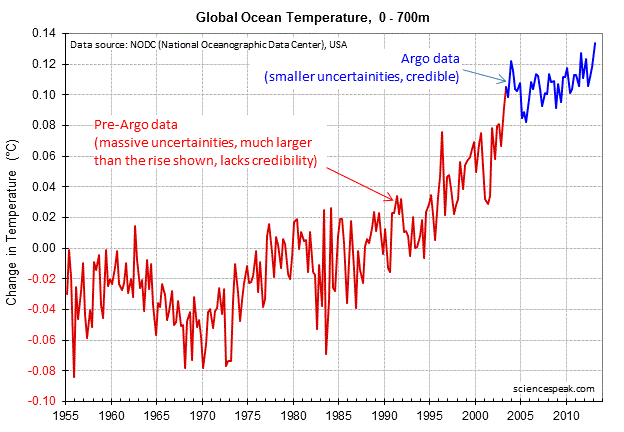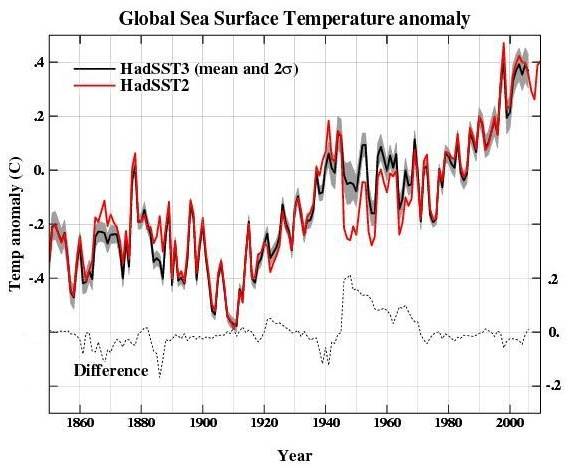- Thread starter
- Banned
- #201
On the warm water volume and its changing relationship with ENSO | CU Sea Level Research Group
On the warm water volume and its changing relationship with ENSO
Abstract
ract Interannual equatorial Pacific 20°C isotherm depth variability since 1980 is dominated by two empirical orthogonal function (EOF) modes: The ‘tilt’ mode, having opposite signs in the eastern and western equatorial Pacific and in phase with zonal wind forcing and El Niño/Southern Oscillation (ENSO) indices; and a second EOF mode of one sign across the Pacific. Because the tilt mode is of opposite sign in the eastern and western equatorial Pacific while the second EOF mode is of one sign, the second mode has been associated with the warm water volume (WWV), defined as the volume of water above the 20°C isotherm from 5°S–5°N, 120°E–80W°. Past work suggested that the WWV led the tilt mode by about 2–3 seasons, making it an ENSO predictor. But after 1998 the lead has decreased and WWV-based predictions of ENSO have failed. We constructed a sea level-based WWV proxy back to 1955 and before 1973 it also exhibited a smaller lead. Analysis of data since 1980 showed that the decreased WWV lead is related to a marked increase in the tilt mode contribution to the WWV and a marked decrease in second mode EOF amplitude and its contribution. Both pre-1973 and post-1998 periods of reduced lead were characterized by “mean” La Niña-like conditions including a westward displacement of the anomalous wind forcing. According to recent theory, and consistent with observations, such westward displacement increases the tilt mode contribution to the WWV and decreases the second mode amplitude and its WWV contribution.
The full text is freely available in several formats at the link above.
On the warm water volume and its changing relationship with ENSO
Abstract
ract Interannual equatorial Pacific 20°C isotherm depth variability since 1980 is dominated by two empirical orthogonal function (EOF) modes: The ‘tilt’ mode, having opposite signs in the eastern and western equatorial Pacific and in phase with zonal wind forcing and El Niño/Southern Oscillation (ENSO) indices; and a second EOF mode of one sign across the Pacific. Because the tilt mode is of opposite sign in the eastern and western equatorial Pacific while the second EOF mode is of one sign, the second mode has been associated with the warm water volume (WWV), defined as the volume of water above the 20°C isotherm from 5°S–5°N, 120°E–80W°. Past work suggested that the WWV led the tilt mode by about 2–3 seasons, making it an ENSO predictor. But after 1998 the lead has decreased and WWV-based predictions of ENSO have failed. We constructed a sea level-based WWV proxy back to 1955 and before 1973 it also exhibited a smaller lead. Analysis of data since 1980 showed that the decreased WWV lead is related to a marked increase in the tilt mode contribution to the WWV and a marked decrease in second mode EOF amplitude and its contribution. Both pre-1973 and post-1998 periods of reduced lead were characterized by “mean” La Niña-like conditions including a westward displacement of the anomalous wind forcing. According to recent theory, and consistent with observations, such westward displacement increases the tilt mode contribution to the WWV and decreases the second mode amplitude and its WWV contribution.
The full text is freely available in several formats at the link above.







